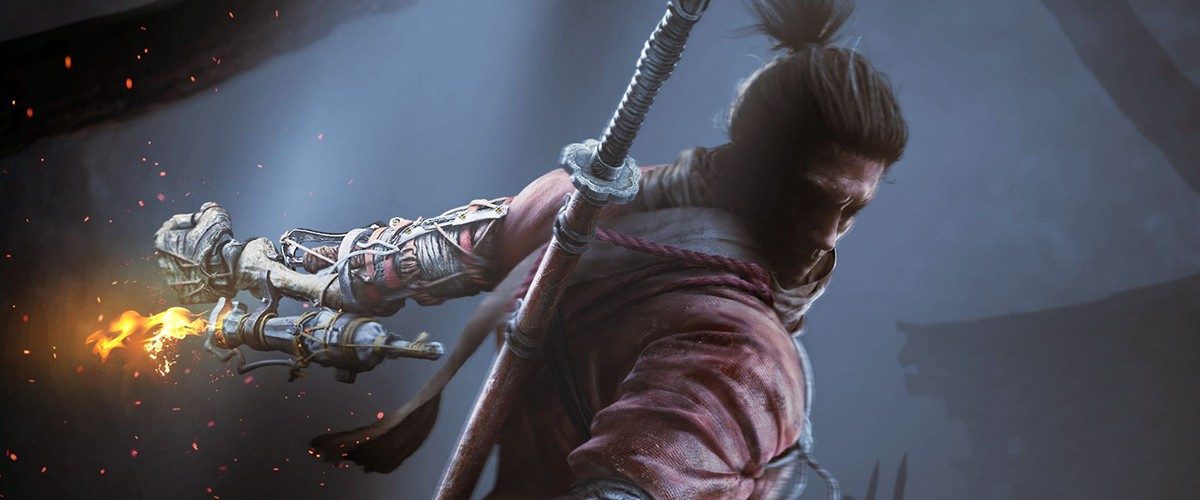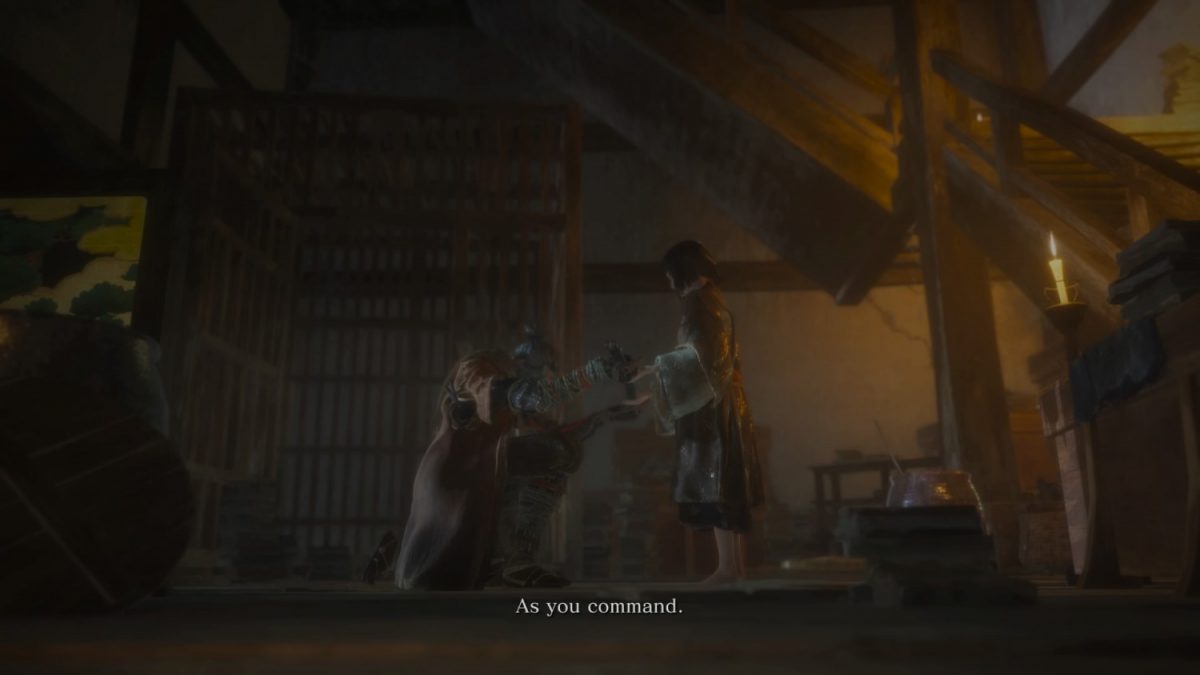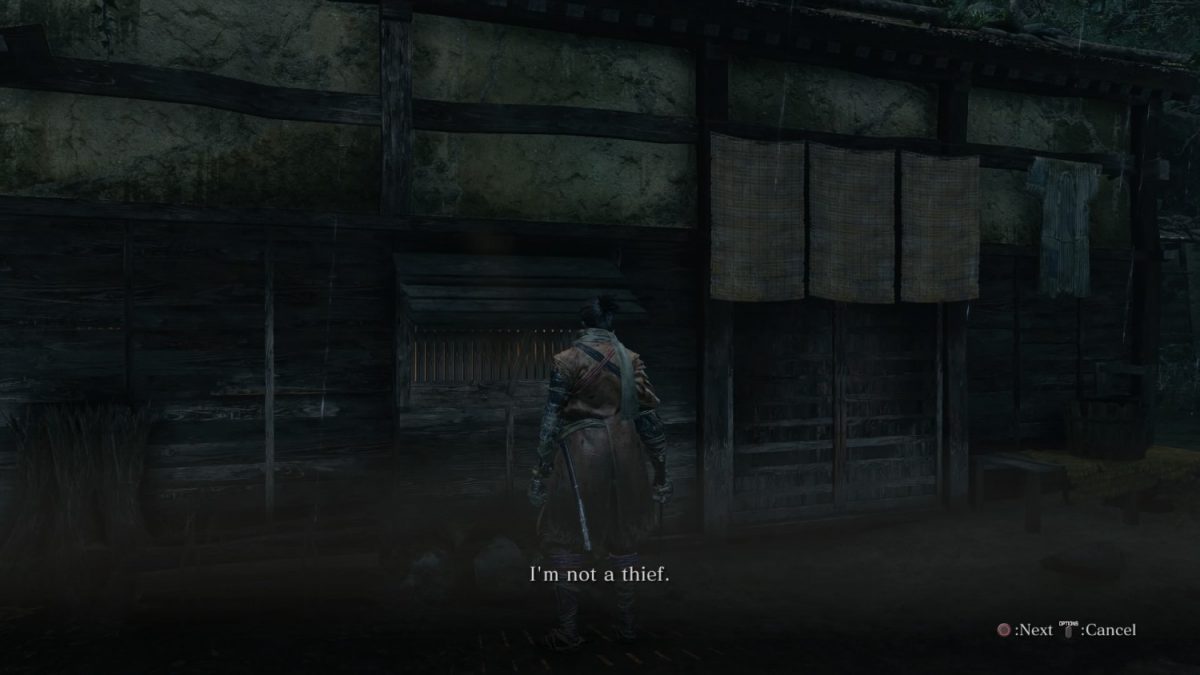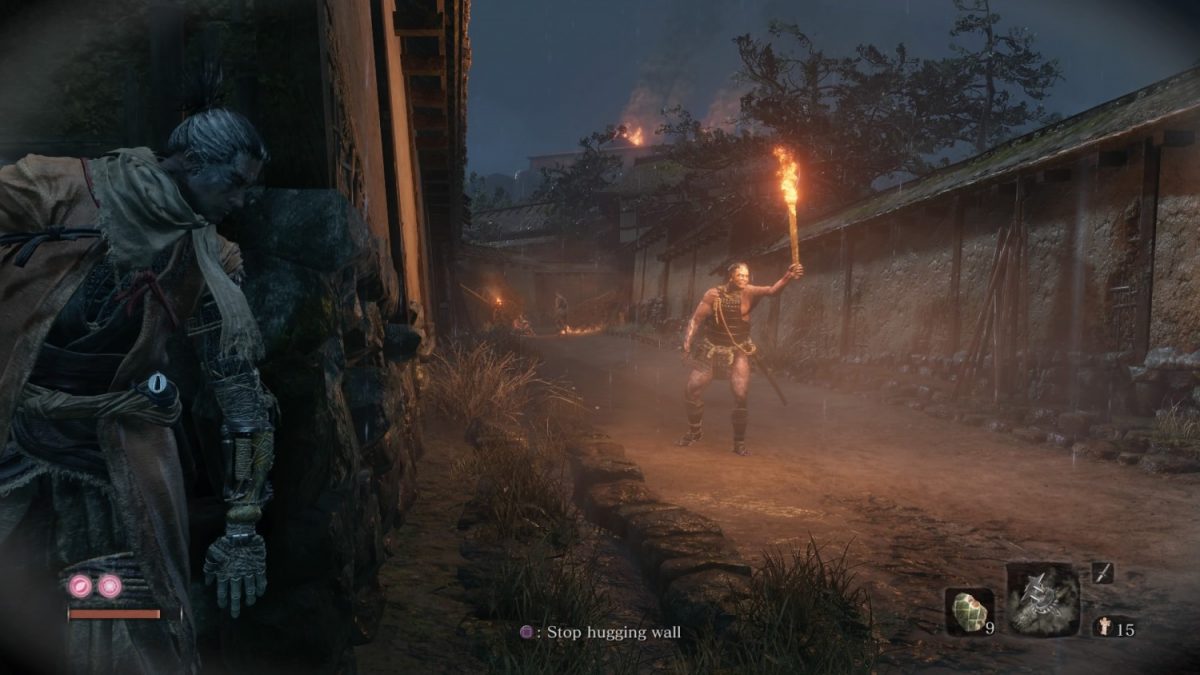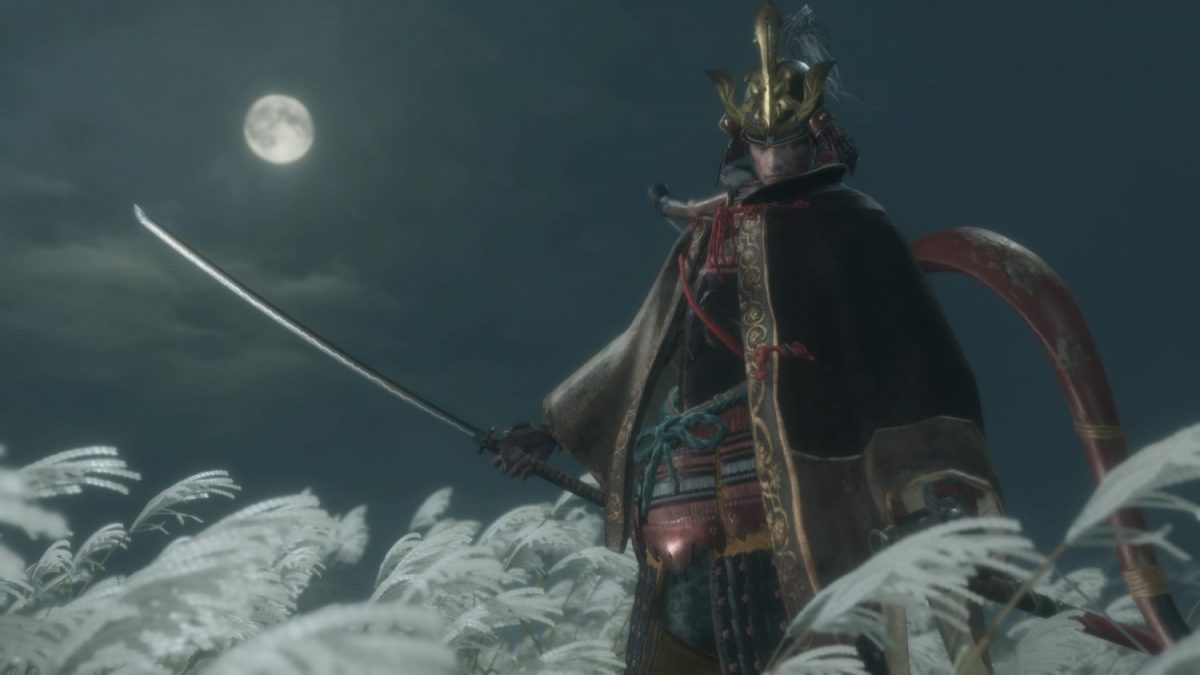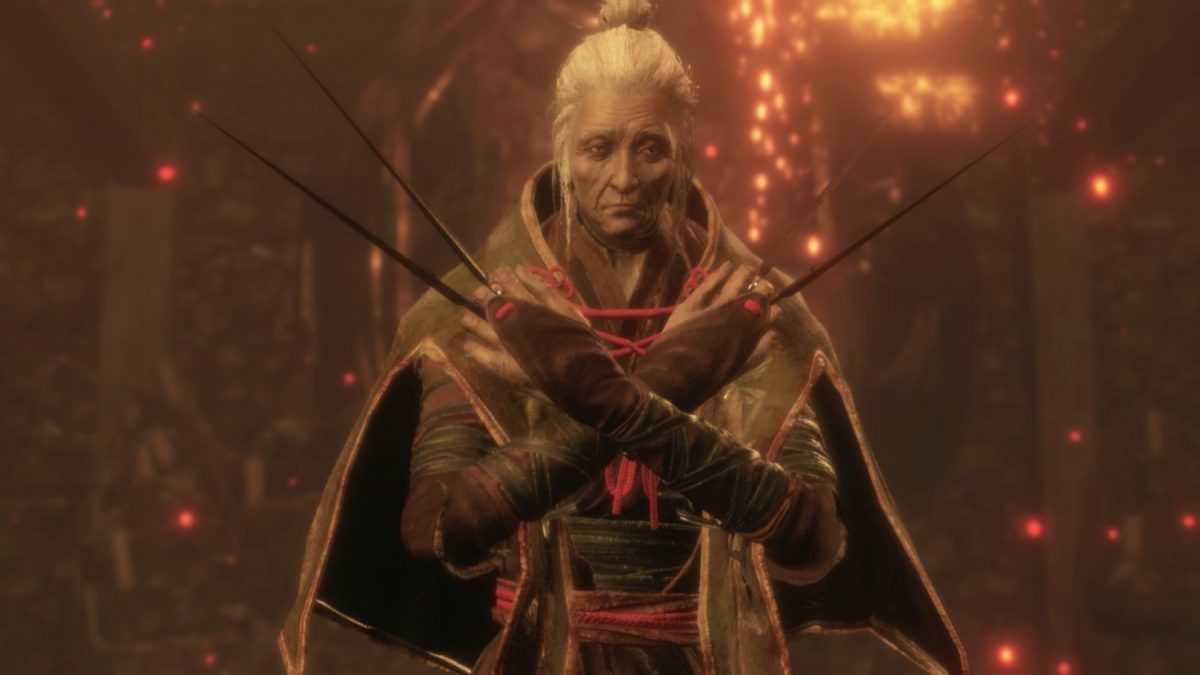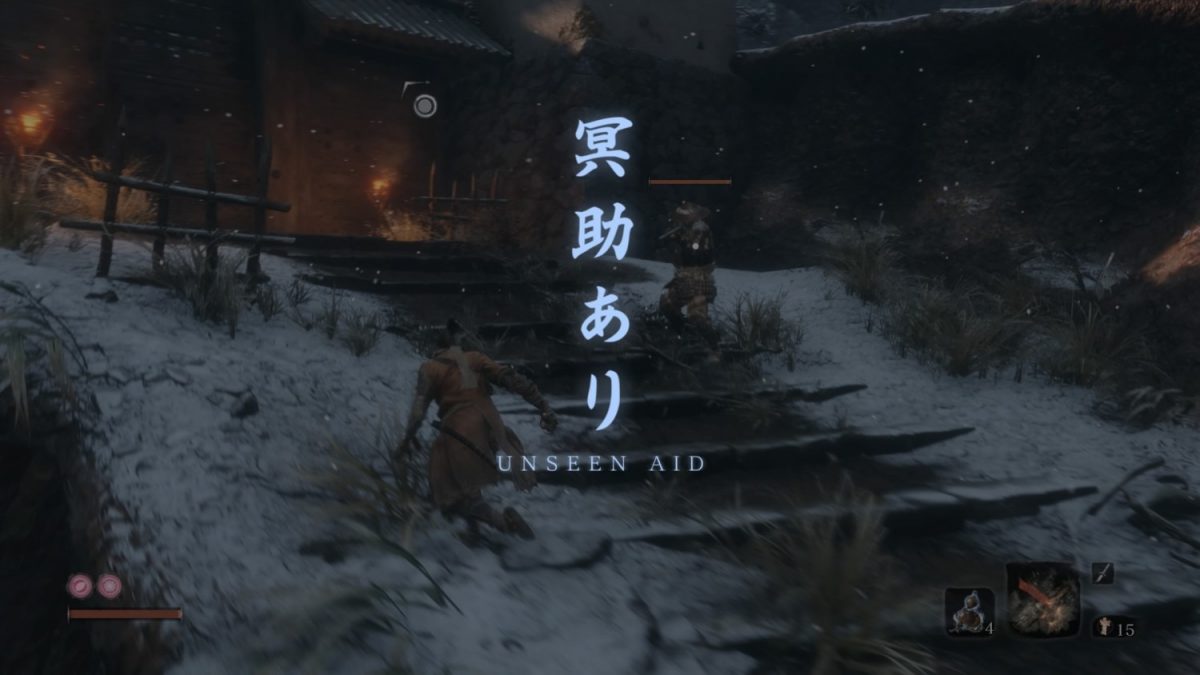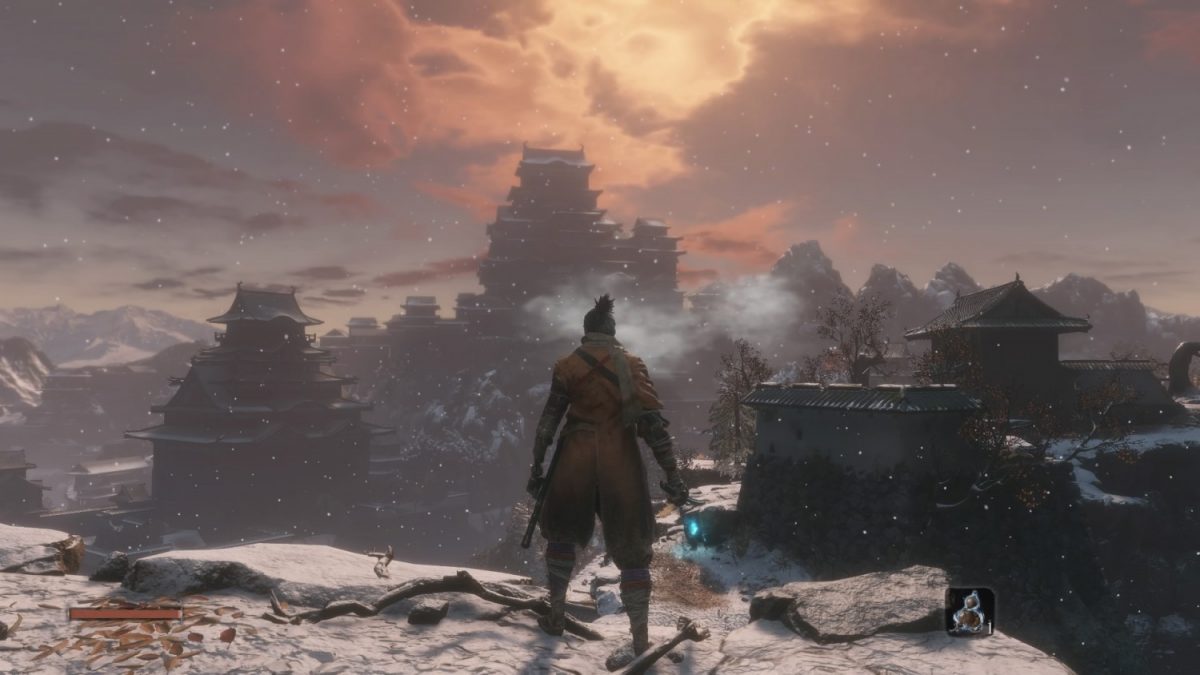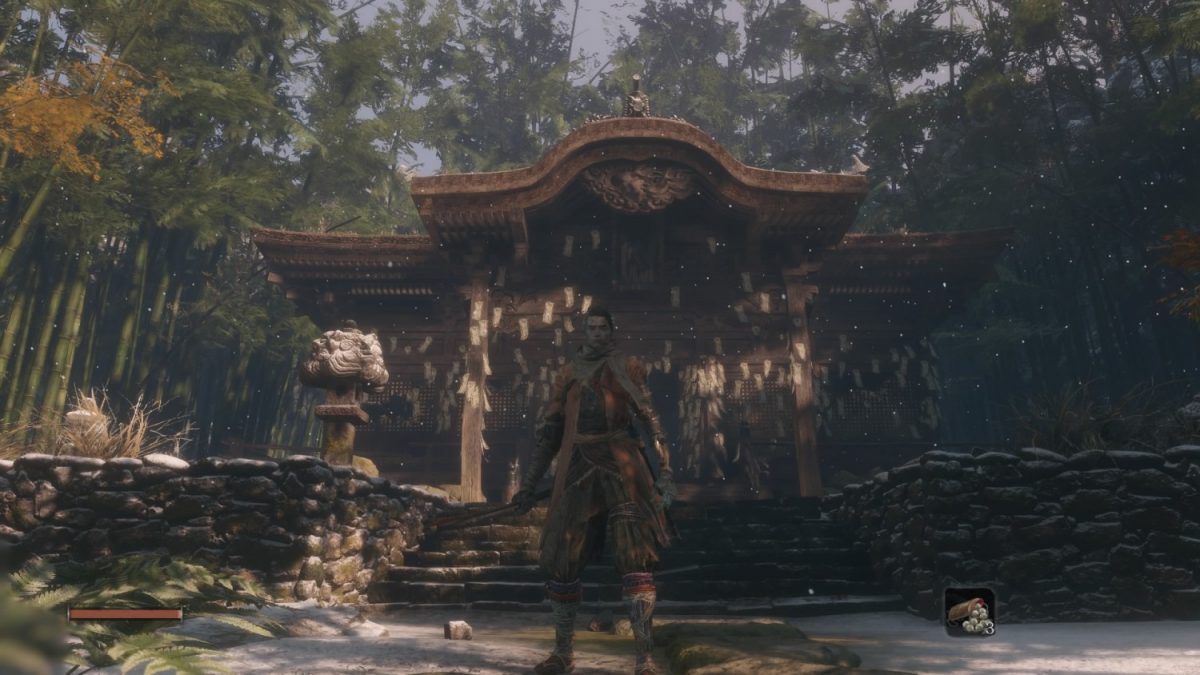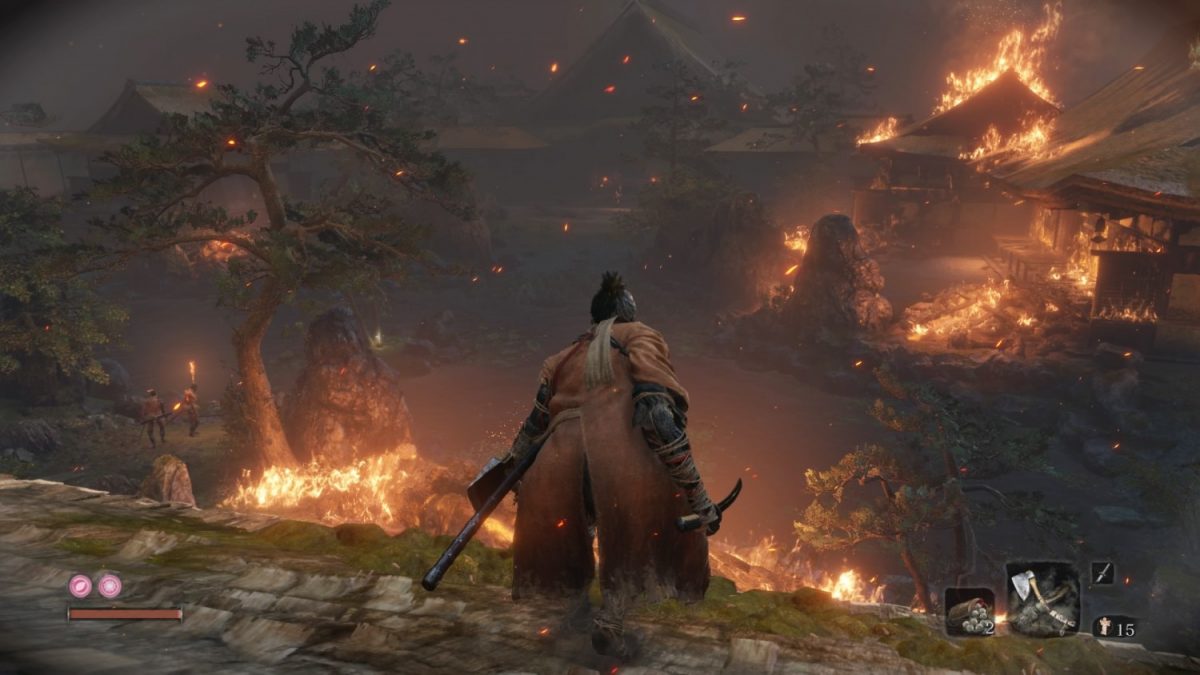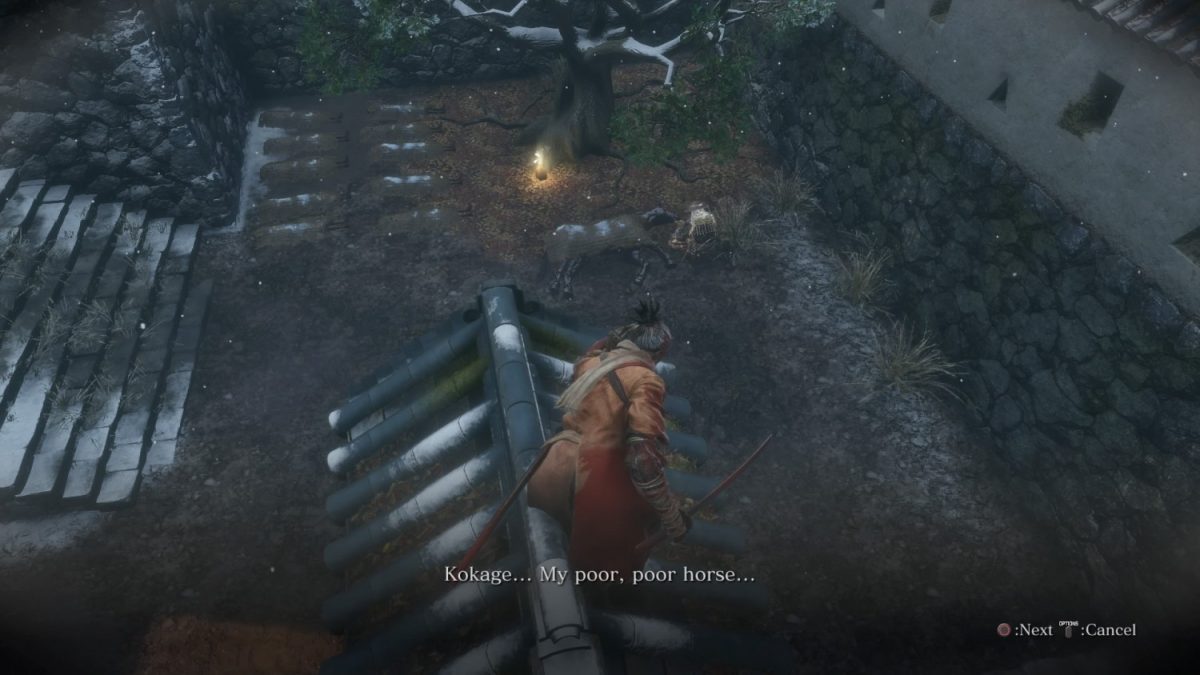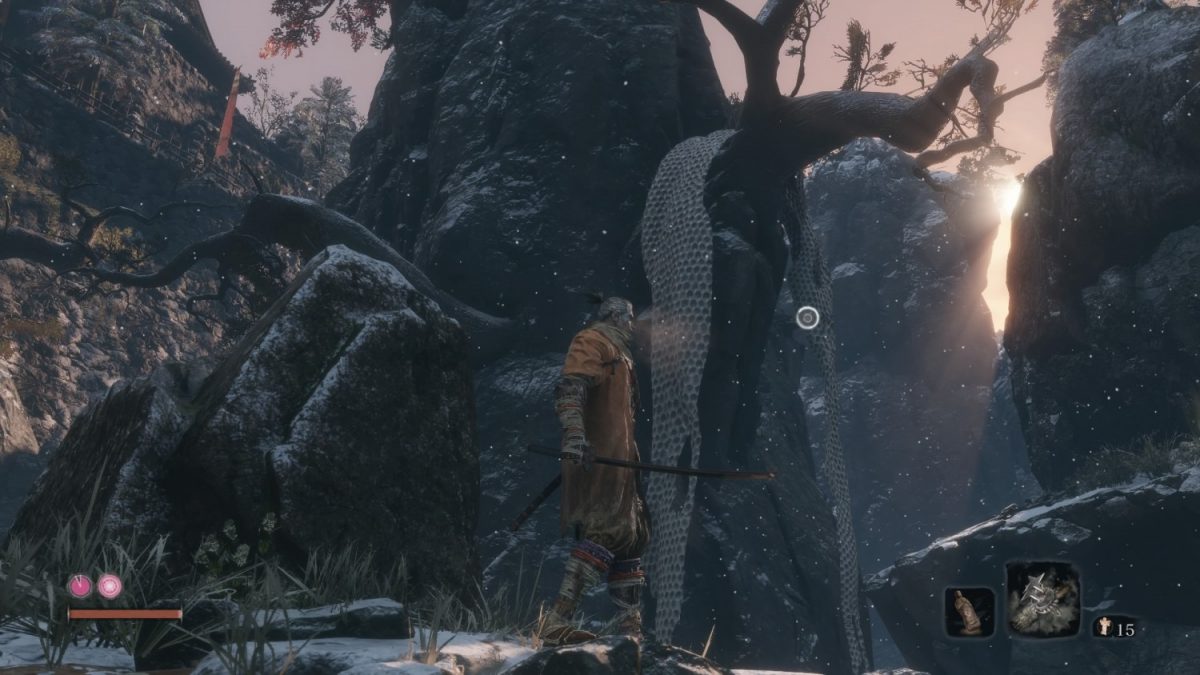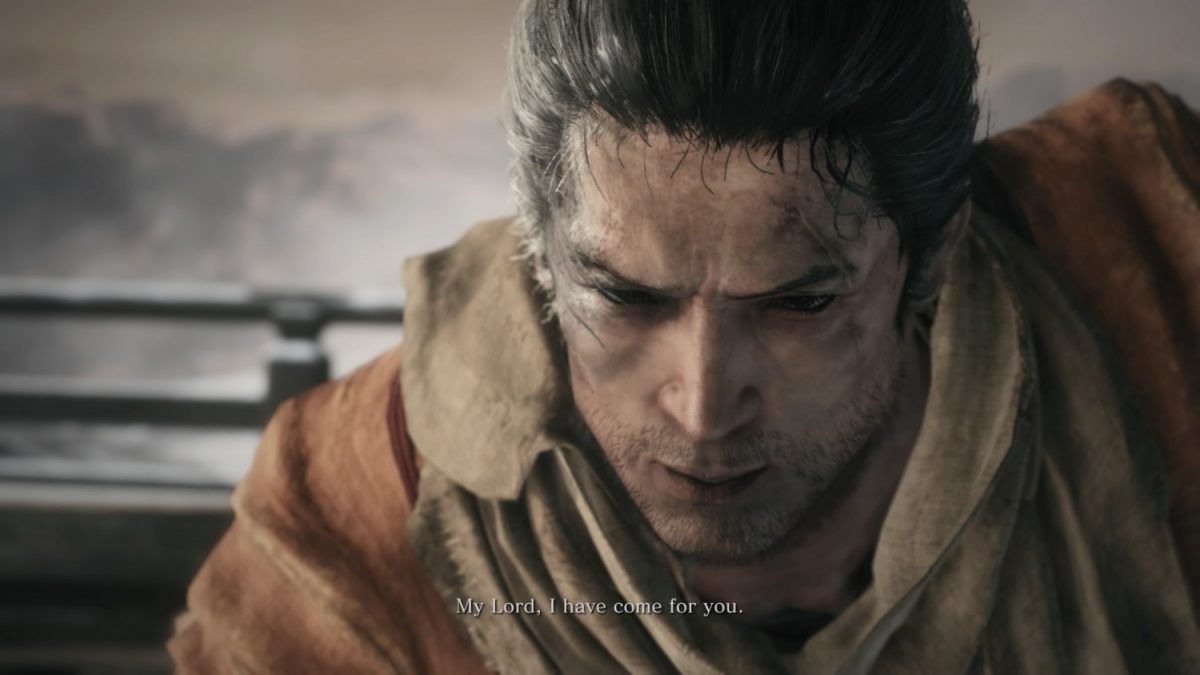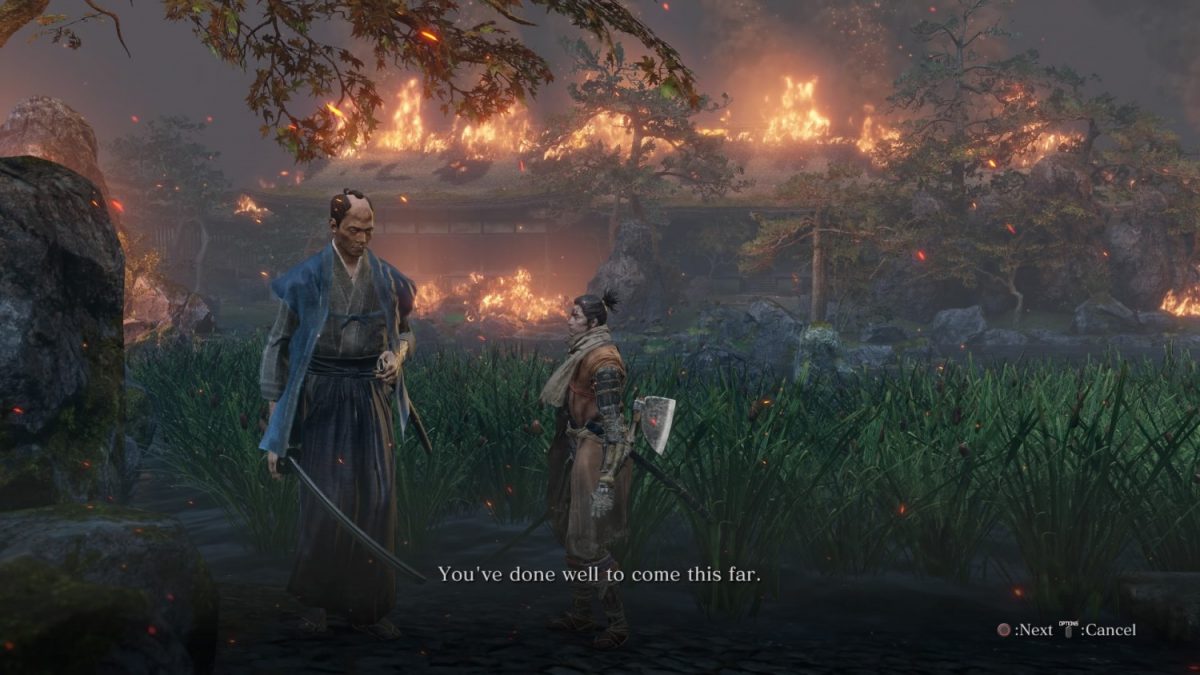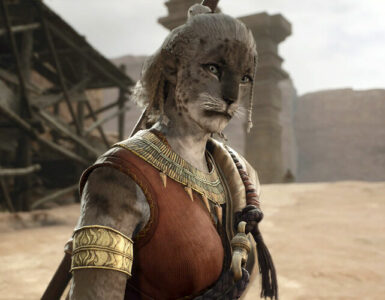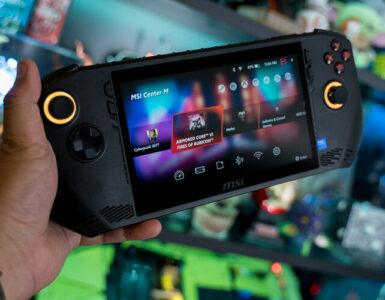- Shares
- 96
Hidetaka Miyazaki’s fascination with death has proven to be an unbeatable combination when mixed with video games. FromSoftware’s Dark Souls and Bloodborne set the standard for killer difficulty settings, and when it came time to announce a new project, Miyazaki-san
Enter Sekiro: Shadows Die Twice. Set in an alternate version of the Sengoku Era, one of Japan’s most iconic and influential periods of their rich history, you play as the titular shinobi (ninja) Sekiro, otherwise known as the One-Armed Wolf.
Armed with a katana, upgradeable prosthetic arm (Devil May Cry V-like), consumables, and agility, Sekiro cuts a swathe through enemies, be it in the shadows or up close and personal, in an attempt to rescue his young Lord Kuro, the Divine Heir, and bring him to freedom.
Sekiro: Shadows Die Twice carries the torch of brutally-punishing, controller-throwing gameplay from its already brilliant predecessors, the Soulsborne series, and pushes it to the next level. Whether you’re a longtime FromSoftware fan or a newcomer to the series, there’s plenty that this game offers that will ensure that it stays in your memories for quite some time.
But don’t think that any prior experience, especially if you’re a FromSoftware veteran, will bring benefits. Expect to throw away most, if not all, of your expectations of the game and the muscle memory you’ve accumulated over the years from the previous FromSoftware titles, because – let’s get this out of the way – Sekiro is a totally different beast, and if you were expecting something that’s basically Dark Souls in Japan, you are in for a truckload of disappointment.
If you haven’t already noticed by now, the main character isn’t some randomly-created persona by players. For the very first time in a From game, we get to experience the story through the eyes of an individual with an actual voice and personal stake in this. No, the Ashen One or the Hunter in the Soulsborne series don’t even come close to counting, because they were all created and customised by the player.
Sure, removing character creation takes away some agency because you don’t get to stamp your personality all over the game, but that’s not the aim of this FromSoftware game. What From wants to give you is a story through the eyes of someone who’s been through the thick of it all, and who better than to show you than the damaged (literally and figuratively) ninja Sekiro?
Without spoiling anything, from the prologue section of the game we know his stakes in this story, the relationships he’s built with the NPCs and will build, and the kind of choices he might have to make later on. For the first time, we’re getting a character who actually responds to NPCs’ opinions of them, which is refreshing to see. Yes, there is no character creation or multiplayer, but that’s not what Sekiro is out to give you. It is a purely single-player experience, and for good reason.
But Sekiro as the gateway for players to his version of Sengoku Japan is but one of the many departures from the typical FromSoftware formula. Its gameplay is actually the largest among those.
Remember the old Japanese stealth video game Tenchu? Now imagine that but the difficulty is cranked up to 11, and gets exponentially more difficult the more you die. Yes, Sekiro is that game.
In that light, Sekiro is first and foremost a stealth game with Soulsborne elements, not so much the other way round, contrary to popular belief. While you will encounter those epic one-on-one moments with boss fights, you’ll be spending most of your time slinking around in the shadows like the shinobi you are, waiting for the opportune moment to cut down your enemies.
Your mobility as Sekiro is as a fully-fledged ninja should be – swift and silent. You’ll be darting across the map without much effort, gliding about as if you were made of feathers. Coupled with the vertical mobility offered by the grappling hook from your prosthetic arm – another refreshing departure from the Soulsborne series – you’ll feel exhilarated just watching Sekiro zip across rooftops and treelines with ease as you evade and dodge enemies.
You can crouch down and hunker down in tall grass or shimmy across walls and cliffsides, and move about unseen by enemies, sneak up to them and, in typical Batman Arkham or Assassin’s Creed fashion, take them down in a single Deathblow.

You can even attack from above with an aerial deathblow, or even grab an enemy from the side as you creep from the corner of a wall.

However, unlike the two games, you can’t perform multiple Deathblows, however (if you do, you’ll alert probably the entire camp, which you definitely don’t want on your plate), forcing you to redouble your efforts and either find a way around that bunch of enemies, or try to lure them away with your assortment of ninja tools and take them out one by one.
Or even better, utilise the Bloodsmoke Ninjutsu and get away in a mist of blood.

It’s a slow, calculated, methodical process, but when you give it time, you’ll be rewarded with an empty locale with tons of exploration to do unhindered by enemy presences.
Of course, stealth is just one way in which you can approach scenarios, which is good game design from FromSoftware. They don’t force you to play a certain way – you can definitely run through all the enemies in the area with your sword, but more often than not you’ll find yourself being overwhelmed by enemies, especially at the later stages of the game, having to run away for cover, waiting for the heat to die down, and try again.
You’re just simply not equipped to constantly block and take hits with armour and a shield as in Dark Souls, or have the health-regenerating Rally mechanic in Bloodborne. Your speed is your best defense in this game, as well as Deflect (more on that later). Some sections in the game really show you how stealth is paramount to your survival, as you snake (heh) your way across enemies, large or extra large.

“Hey, what’s that sou-NOPE NOPE NOPE”
While stealth and mobility take up the lion’s share of Sekiro, direct combat is something FromSoftware has been experts at, and their latest game is no exception. As a reminder once more, you are a shinobi, and you have no proper shield (one of your prosthetic tools is, but that’s besides the point). All you have is your katana, your prosthetic tools, and your reactions.
When you cross blades with an enemy, you have either the option of dodging their attacks, or Deflecting them. The former option may come as familiar muscle memory for Soulsborne veterans, but you’ll soon come to realise that’s actually your worst option here. The telegraphing for enemy attacks – especially bosses – is less obvious this time, and their tracking when the final hit lands has increased greatly, meaning you either have to dodge at the death, which is not as reliable as before, or meet their attack head-on with a deflection.

This may sound as if Sekiro is automatically the hardest game because of this, many of you might think, but it’s actually not as bad as you’d imagine; Sekiro’s speed as a ninja is undoubted, and it also shows in his ability to deflect strings of attacks in one sitting. All you need to do is simply tap the block button while enemies swing down on you and if you hit the sweet spot, you’ll see that orange spark and hear a satisfying clanging sound.
This may take a while to get the hang of, but once you come to grips with it, it’s hugely satisfying and you’ll feel like you’re straight out of an Akira Kurosawa movie with these one-on-one fights with samurai and/or ninja.
What this does is deal Posture damage to the enemy. Manage to do enough of it, and you’ll leave them open for a Deathblow. This will take some time to master, especially when up against enemies with long 10-, 15-hit combos, but once you do, you’ve mastered practically three quarters of the game. However, if you mistime your deflect, you’ll also take Posture damage. Accumulate enough, and you’ll also be vulnerable to attacks.

It’s then a matter of managing your Posture and maintaining your aggression to stay on top of your enemies.
The more Vitality damage you take, the more vulnerable your Posture, so Vitality is something you need to monitor as well. One main gripe about combat is the camera, which totally betrays you, especially when you’re fighting highly mobile enemies in claustrophobic environs. Despite this, the game feels fair in that whatever restrictions that are placed upon you are usually placed upon your foes as well, with some exceptions, naturally. And most of those come from the main bosses of the game.
Bosses are, once more, the creme de la creme in Sekiro: Shadows Die Twice. They are, without a shadow of a doubt, what makes the game tick.
There are mini-bosses that will feel tough initially, requiring you to perform at least two Deathblows in order to down them. This, however, is not to say that every mini-boss is a joke; some may actually even be stronger than some of the early game bosses, simply because of the types of status effects they dish out. Learn their patterns well enough, run around a little bit, and you’ll be carving through them like butter. Take them as a warm up for the true challenge in the game: the main bosses.
From horseback riding samurai to opposing shinobi, to the weird and divine we’ve become so accustomed to in a FromSoftware game, their designs are so vastly different they essentially feel different from one another.
Some bosses move around too quickly and have a huge Posture bar, forcing you to do Vitality damage and whittle heir health down. Some require you to perform more than two Deathblows in order to fully defeat them, most of the time changing up their fighting style or movement to spice things up. Some of them won’t even give you a window to attack for a while, forcing you to evade, dodge and deflect until that window opens up again. Some of them are only accessible if you make certain choices in the game, which says a lot about
It’s a dance to stay ahead of these bosses – all of which are heavily varied in design in both aesthetic and mechanical aspects, which will most definitely keep you on your toes regardless of how many runs you do.
But of course, expect to see this on your screen many times over, even if you’re a hardened Soulsborne veteran.

Not even the ability to bring up the pause menu (!!!) to stretch, crack your knuckles, or answer the call of nature mid-boss-fight, can save you from certain death.
It’s no accident that Sekiro: Shadows Die Twice was named as such. You literally have two chances to live before you truly die – an entirely new mechanic that you wish was available in FromSoftware’s previous entries.

Basically, when you succumb to a fatal blow, you have mere seconds to opt for an immediate Resurrection – a second lease at life, if you will, to try and finish what you started. Of course, if you fail, you actually die, and you permanently lose half of your total current accumulated XP and Sen (the in-game currency). You can upgrade the Resurrection ability further, but without special items, you are still limited in your ability to rise again.
This, by far, is the most punishing penalty to players in any FromSoftware title, as there is no conceivable way to retrieve your lost resources, unless you receive Unseen Aid.
Unseen Aid is another mechanic unique to Sekiro and it is a boon you receive upon death that prevents you from losing half your XP and Sen for that particular run. It’s a percentage-based ability with a hard cap at 30%, so don’t rely on it kicking in every single time you drop.
FromSoftware loves their fans so much that they are willing to give a lot more pain in the form of the dreaded Dragonrot. Dragonrot not only reduces your chances of receiving Unseen Aid, but it also affects the NPCs around you, and once they’ve got it, their respective questlines are halted.
There is a cure, but discovering it and choosing when to use it is important as well.
If you like tinkering around with playstyles and abilities, first know that Sekiro actually offers little variation in terms of character building, but rather focuses on the tools that are available at your disposal. Yes, you’ll gain access to skill trees called Arts to vary the way in which you can fight, as well as give you new skills to slice up your enemies with.
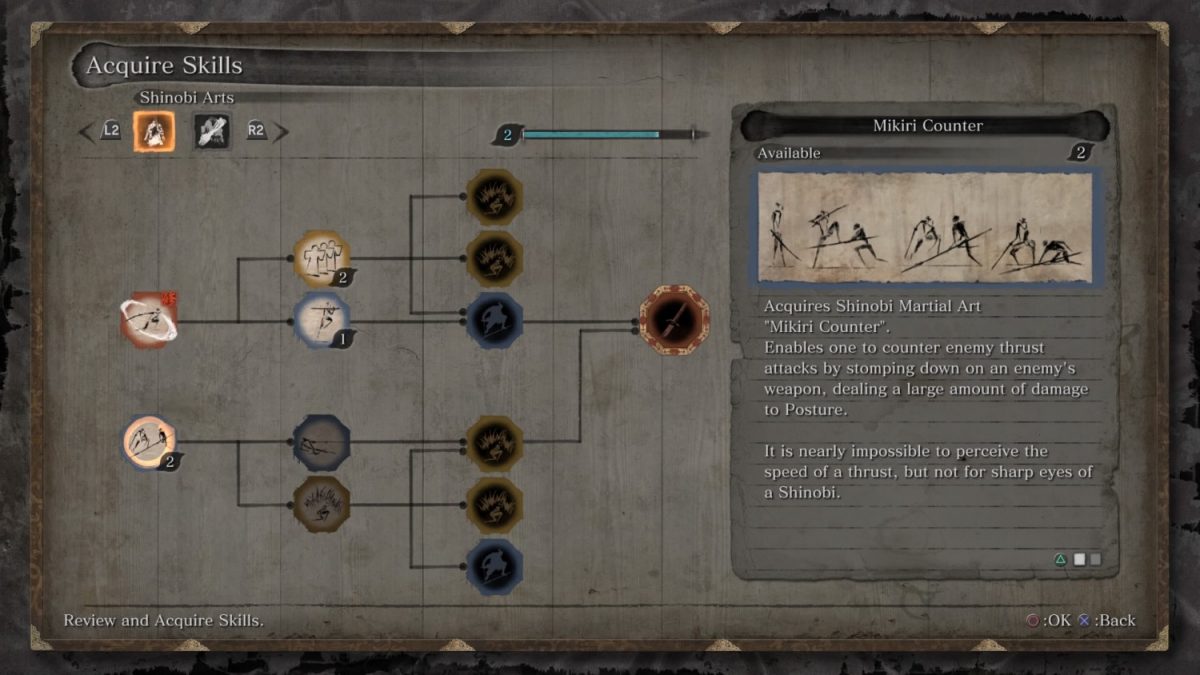
There are Shinobi Arts where you’ll acquire new combat skills, Ashina Arts for improving your swordsmanship, Temple Arts if you like to punch your foes in the face. There are even Prosthetic Arts for you to combo your basic katana attacks with your prosthetic devices to great effect.
And then there is your prosthetic arm. Basically your utility belt for the game, this bad boy is the best friend you’ll most likely take for granted. Throughout your playthrough, you’ll acquire special parts that you’ll have to take back to the Sculptor, who will refine these into proper Shinobi Tools for you to use.

They range from a flame vent, to a loaded axe or spear, and to even an oversized fan to whisk enemies away. The amount of utility they offer is situational, so you’d best swap around them as you play. That said, their situational use is really quite niche at times, some of which even becoming an afterthought because of how optional they feel, even after upgrading them.
For a 2019 game, Sekiro sometimes feels dated graphically, even on a PS4 Pro. After all, it was under development right after Bloodborne: The Old Hunters DLC wrapped, so naturally its visual end has to give.
Even then,
From the sun-kissed mountaintops of Senpou
Similarly, the world is interconnected for the most part, with branching path after branching path available for you to gorge on. The environments in Sekiro are large, especially with the new verticality included with your grappling hook (though not fully sandbox-style like in Assassin’s Creed, as you’ll still have to overcome certain boss-shaped hurdles in order to access new areas).
One interesting factor is that Sekiro rewards you with information if you bother to explore enough and pay attention to your surroundings. Many times over, there will be opportunities for you to Eavesdrop on unsuspecting enemies seeped in
Even the mise en scene around you tells you a story of what you might expect if you go around a certain corner. These subtle aspects have long been present in FromSoftware’s games, and you are rewarded with a little more mastery of the game in some ways should you choose to explore those paths first, before charging headlong into the wild, and oftentimes fatal, unknown.
Finally, where combat is Sekiro’s soul, the story is its heart, and does the story shine in this game. With the aforementioned Sekiro as your protagonist, you have a lot more emotional investment into the story with his journey. And, in typical FromSoftware fashion, there are multiple endings with which to explore.
Like we mentioned before, you can only access certain bosses by making certain choices, and that alone gives you a lot of incentive to replay Sekiro’s journey over and over again. And even when you’re done with the multiple endings (let’s just say there are more than two), there’s still New Game+ to truly test your mettle with. And we’re not even getting started on your no-damage runs, no-upgrade runs, no-stealth runs, and so on.
FromSoftware’s Sekiro: Shadows Die Twice is already making waves across the gaming community, firmly putting it up there with From’s best titles. And we would not mind dying more to savour it.
GEEK REVIEW SCORE
Summary
FromSoftware has really upped the ante with their latest entry. Sekiro: Shadows Die Twice retains that notorious FromSoftware formula and refines it with a fresh-but-familiar Tenchu vibe.
Overall
9.5/10
-
Gameplay - 9.5/10
9.5/10
-
Story - 10/10
10/10
-
Presentation - 8.5/10
8.5/10
-
Value - 10/10
10/10
User Review
( votes)Marion has a serious RPG addiction. Sometimes it bleeds into real life; he forgets to sleep because he thinks he has a Witcher’s body clock. Forgive him in advance if he suddenly blurts out terms such as “Mind Flayer” and “Magic Missile”, because never once does he stop thinking about his next Dungeons & Dragons game.

